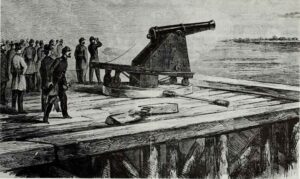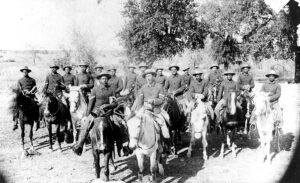On 16 December 1944, the German Wehrmacht launched what would be its last major offensive in the West. After 2,000 guns and Nebelrwerfer rocket launchers bombarded the American lines, three German armies numbering 250,000 soldiers with 1,000 tanks and assault guns advanced against the thinly held front in the Ardennes, a hilly and heavily wooded region of southern Belgium and Luxembourg. The American divisions assigned to the “quiet” Ardennes sector were either inexperienced (99th and 106th Infantry Divisions) or had been bloodied in the battle for the Hürtgen Forest (4th and 28th infantry Divisions).
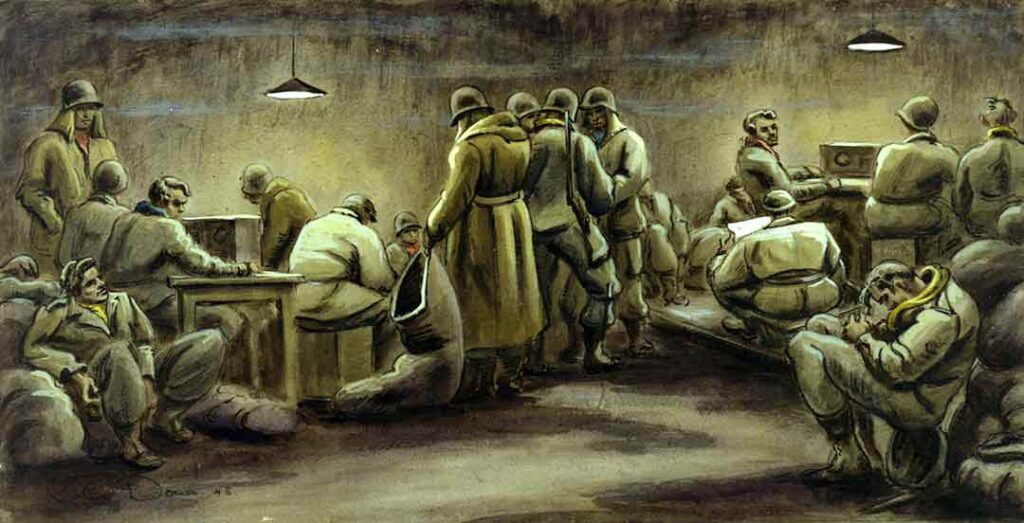
Messengers, drivers, and signalmen gather in the relative safety of the basement of a building in Bastogne, Belgium, in Olin Dows’s 1945 watercolor on paper, Message Center, 101st Airborne Division. (U.S. Army Museum Enterprise Art Collection)
Initially, the Germans experienced some early successes in what became known as the Battle of the Bulge. They surrounded two infantry regiments of the 106th Division and forced them to surrender. Other units withdrew in the face of enemy pressure. However, determined resistance by small groups of soldiers, including combat engineers and various support troops fighting as infantrymen, slowed or even halted the German advance, greatly disrupting the enemy’s timetable.
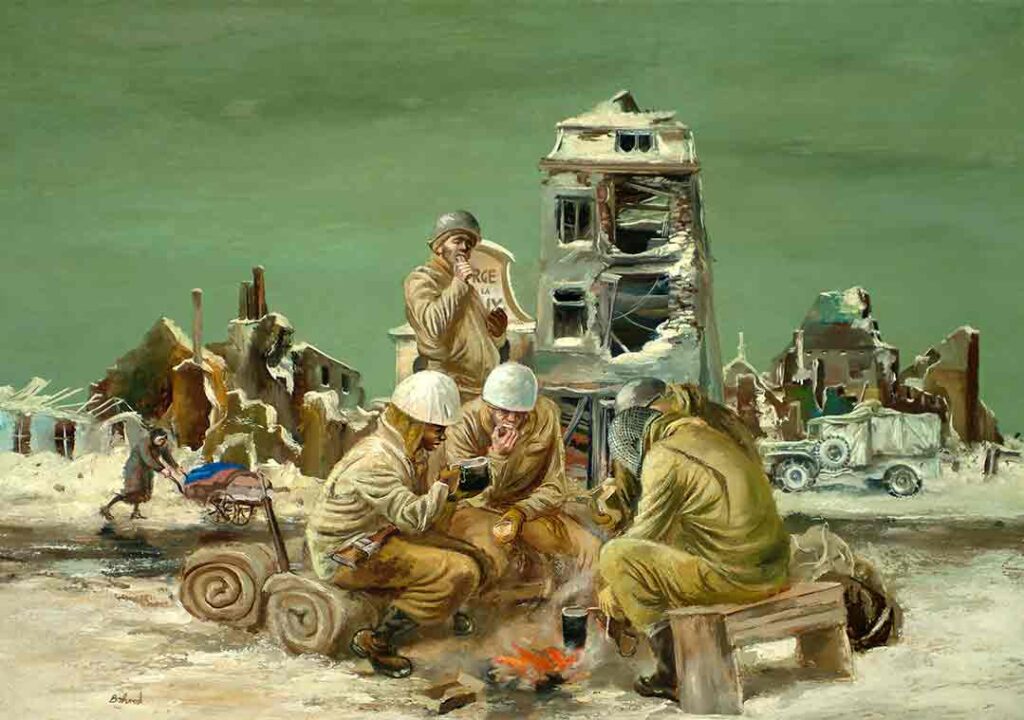
In Aaron Bohrod’s 1945 oil on canvas, K-Rations, soldiers besieged in Bastogne dine on cold canned rations. (U.S. Army Museum Enterprise Art Collection)
The most desperate fighting occurred at the important Belgian crossroads town of Bastogne. Despite being surrounded and with shortages of food, ammunition, and medical supplies, soldiers of the 101st Airborne Division and various armored, artillery, and infantry units held out against the Germans until Lieutenant General George S. Patton’s Third Army, led by the 4th Armored Division, broke through the German encirclement on 26 December.
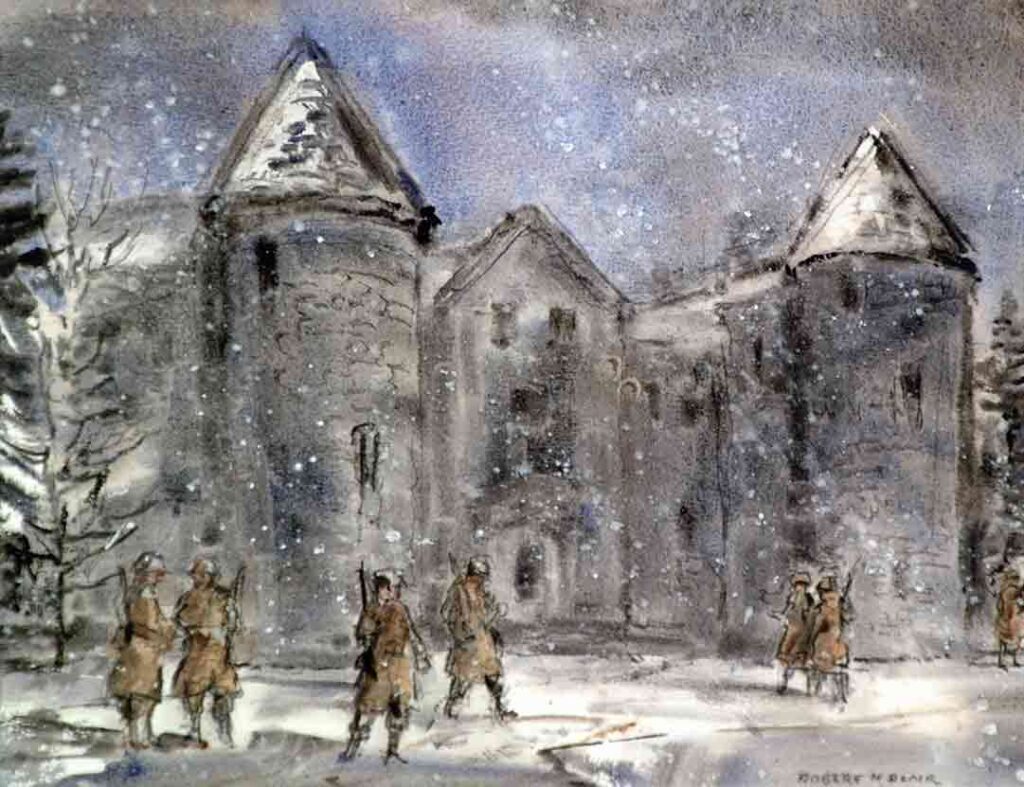
Soldiers advance towards the fighting as snow falls in Robert N. Blair’s 1945 watercolor on paper, Luxembourg Chateau. (U.S. Army Museum Enterprise Art Collection)
The Germans launched a second offensive, Operation NORDWIND (NORTHWIND) on 31 December to the south in Alsace against the U.S. Seventh Army. Like their offensive in the Ardennes, the Germans, aided by bad weather that grounded Allied air power, experienced some initial successes but were eventually defeated.
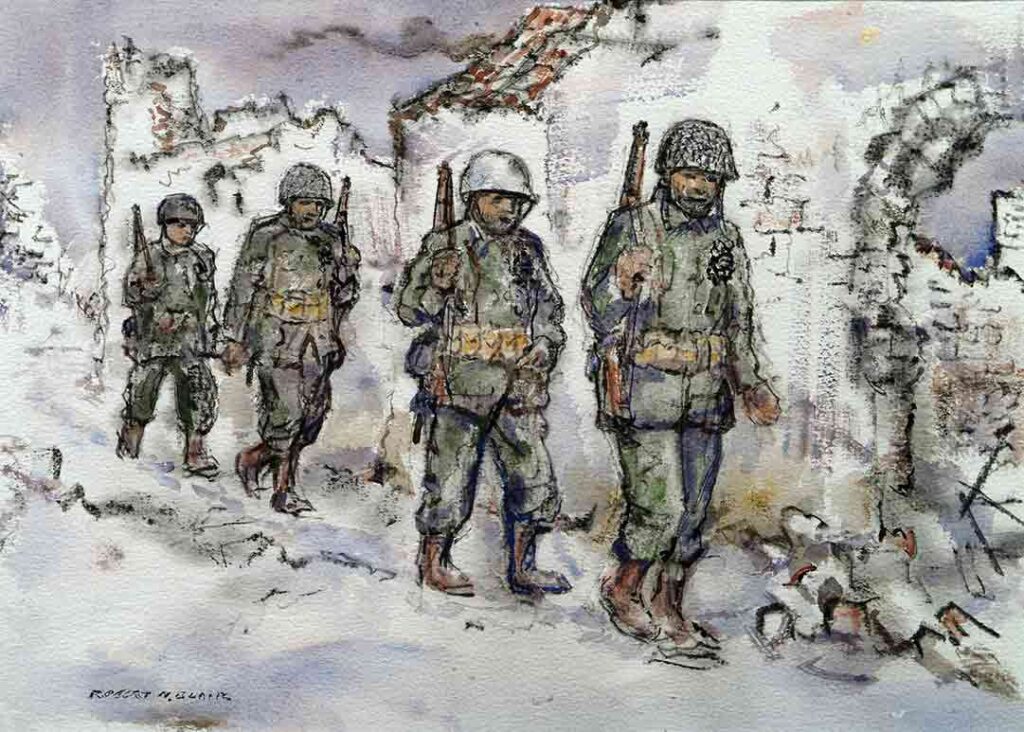
Foot soldiers march through the snowy remains of a Belgian town in Robert N. Blair’s 1945 watercolor on paper, Infantry/Battered Bulge Village. (U.S. Army Museum Enterprise Art Collection)
By 25 January 1945, Allied forces had pushed the Germans back to their original lines and all but crippled the Wehrmacht in the West. The cost was high, however—100,000 casualties, including 19,000 U.S. dead in what was the biggest battle in U.S. Army history.

